
CFOs: Are You Sleeping on SaaS Spend?
Table of Contents ToggleWhat Is SaaS Spend Management?SaaS Spend Management vs...
Back
Back
Search for Keywords...
Blog

Table of Contents
SaaS spending has become one of the most dynamic and fast-growing areas of enterprise IT budgets. In fact, companies now spend an average of $49M annually on SaaS tools, according to the 2025 SaaS Management Index. And the growth shows no signs of slowing—Gartner projects a 19.2% increase in global SaaS spending in 2025, reaching $299 billion.
As SaaS investments scale, so do the challenges of managing and optimizing them. Without a system in place, organizations risk underused licenses, duplicative apps, and budget waste. That’s why 91.2% of IT leaders now see software optimization as a key driver of cost savings. Whether you’re building a strategy from scratch or refining existing processes, understanding the difference between SaaS spend management and SaaS spend optimization is essential to driving efficiency, reducing costs, and maximizing value.
SaaS spend management is the holistic practice of overseeing all software-related expenses within an organization. This includes discovering applications, tracking purchases, monitoring usage, managing renewals, and negotiating contracts. With hundreds or even thousands of tools spread across teams, gaining visibility and control has become essential for managing software efficiently at scale.
SaaS spend optimization, while often used alongside management, has a more specific goal: reducing costs and making the most of every software investment. It involves detailed analysis of usage patterns, license utilization, and pricing to uncover savings opportunities and improve ROI. In other words, where SaaS spend management ensures oversight, optimization ensures efficiency.
SaaS spend management serves as the foundation. It covers the full lifecycle of SaaS oversight—governance, budgeting, policy enforcement, and software asset tracking. Optimization is a critical subset of that process, explicitly focused on improving financial and operational performance. For example, setting procurement standards and managing vendor lifecycles fall under management, while rightsizing licenses and consolidating applications fall under optimization.
Leading IT and procurement teams use both approaches together. With the right data and tools, they treat optimization as an ongoing effort—not a one-time event. When embedded into SaaS spend management, optimization helps reduce waste, strengthen vendor relationships, and ensure software aligns with business needs.
Guide to Managing SaaS Costs
Learn MoreAn effective SaaS spend management strategy requires complete visibility, proactive oversight, and strategic alignment between IT, procurement, and business units. These components help organizations identify savings, reduce redundancy, and ensure software is delivering real value.
The first step in managing spend is knowing what software exists in your environment. Discovery efforts must go beyond known contracts to identify unapproved tools, free trials, and team-level purchases. Without full visibility, it’s impossible to manage or optimize software investments. Many organizations use SaaS spend management software to automate discovery, often uncovering 2–3x more applications than expected.
Once applications are identified, the next challenge is tracking how they’re used and what they cost. This includes license utilization, active users, feature adoption, and total spend. Granular usage data is essential to pinpoint underused licenses, assess business value, and drive cost optimization efforts. By aligning spend with actual usage, organizations can rightsize their portfolios and reduce waste.
SaaS vendors often operate on varied billing cycles, complex renewal terms, and pricing tiers. Keeping track of these details across hundreds of contracts requires structured vendor management. That includes maintaining a central repository of agreements, monitoring renewal dates, and evaluating vendor performance. Strong vendor management not only supports spend control—it also sets the stage for successful optimization during renewal negotiations.
With accurate usage data and vendor benchmarks, organizations can approach contract negotiations from a position of strength. That means securing better pricing, avoiding overprovisioning, and ensuring contract terms support organizational goals. SaaS spend optimization starts here—when procurement and IT partner to negotiate contracts based on real-world data rather than estimates or assumptions.
Most organizations understand the value of managing and optimizing SaaS investments. Yet putting that understanding into action isn’t easy. Even with high stakes—millions in annual spend and rising pressure to cut costs—optimization efforts often stall due to fragmented data, limited visibility, and organizational complexity.
One of the most persistent challenges is poor license utilization. According to Zylo’s 2025 SaaS Management Index, only 47% of licenses are used in a given month—meaning 53% go to waste. That adds up to $21 million in wasted SaaS spend annually per company.
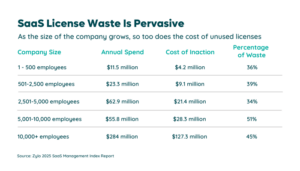
Many organizations overspend to accommodate growth that never materialized or because they lack visibility into actual usage. Without clear insights, IT teams struggle to reassign licenses, consolidate users, or downgrade tiers. Rightsizing isn’t a one-time event—it requires continuous monitoring and adjustments to match business needs.
Departments often adopt tools outside of IT’s oversight, leading to fragmented tech stacks, duplicative apps, and increased risk. In fact, shadow IT accounts for 1% of total SaaS spend and 45% of all applications in use, according to Zylo data.
This lack of visibility makes it difficult to manage software holistically or negotiate with vendors based on total organizational spend. Even more, it inflates costs and reduces efficiency across teams.
SaaS pricing models can vary widely—by user, usage, tier, features, or even time. This complexity makes it hard to forecast spend, evaluate alternatives, or compare value across vendors.
Without centralized software management and accurate cost data, companies risk overpaying for functionality they don’t need or missing out on more favorable terms. Optimization starts with demystifying these models and aligning them with actual usage patterns.
Unmanaged or unknown applications introduce more than just compliance risks—they also come with real financial consequences. In the average SaaS portfolio, 51% of applications have a “Poor” or “Low” risk score according to the Compliance Confidence Index (CCI), meaning they introduce significant security and compliance risks to the organization.
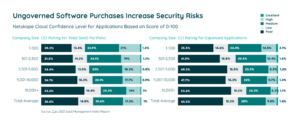
Without visibility into which tools are in use and who is using them, organizations face exposure to data breaches, regulatory fines, and contractual penalties. Shadow IT further amplifies the issue by allowing unvetted vendors to access sensitive data, often without IT’s knowledge.
Beyond the risk, there’s also cost and waste. Security audits, incident responses, and remediation efforts pull budget and resources away from strategic initiatives. Redundant or unauthorized tools also drive up license costs, especially when overlapping functionality goes unchecked. Effective SaaS spend optimization must include security and privacy oversight to reduce both financial exposure and operational risk.
Redundant tools often sneak in as different teams buy similar apps for the same purpose. It’s common to see multiple tools for project management, document sharing, or messaging.
These overlaps add up fast. In fact, the top three redundant app functions—online training, project management, and team collaboration—represent $477,000 to $2.8 million in potential savings.
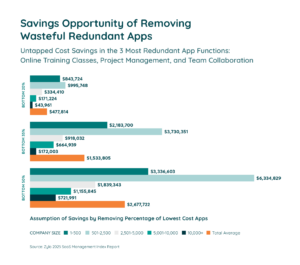
These costs often stay hidden until a full application audit brings them to light. Consolidating tools is one of the fastest ways to cut spend and boost efficiency.
When software spend is scattered across departments, budgets, and billing systems, it’s difficult to get a clear view of total cost. This lack of transparency makes it nearly impossible to track ROI, manage renewals, or make informed decisions.
Without centralized reporting, organizations can’t see where money is going—or where it’s being wasted. SaaS spend optimization depends on surfacing accurate, real-time cost data that drives smarter strategies.
Organizations that invest in SaaS spend optimization see measurable benefits in cost control, efficiency, and risk reduction. With the right strategies and tools in place, IT and procurement teams can better manage budgets, reduce redundancy, and improve software value across the business.
Optimization efforts lead directly to financial savings by eliminating unused licenses, consolidating vendors, and avoiding overprovisioning. By aligning software spend with actual usage, companies reduce waste and gain back budget for innovation or strategic initiatives. These savings are particularly impactful as software costs continue to rise year over year.
“The first goal is to get visibility, and when you tell a story using the data, it helps drive organizations to make better-informed business decisions. That’s the long-term side of it. But a lot of these decisions come in the form of software rationalization, cost savings opportunities, chargebacks within the organizations. Overall, operational efficiency is what we’re looking for in terms of SaaS spend.”
— Shravya Ravi, Manager, Asset Management at LinkedIn
When every application is tracked, managed, and approved, organizations reduce the risk of non-compliance and data breaches. SaaS spend optimization enhances governance by identifying unauthorized tools, ensuring vendors meet compliance standards, and eliminating blind spots that come with shadow IT. This tighter control is essential for meeting internal policies and external regulations.
When licenses are aligned to actual usage and redundant tools are eliminated, every dollar spent on software works harder. SaaS spend optimization ensures that teams use the right tools effectively—maximizing ROI and improving adoption across the organization.
As organizations scale, software portfolios often grow faster than necessary. Optimization introduces guardrails, helping companies grow their tech stacks intentionally rather than reactively. This reduces waste while ensuring teams still have access to the tools they need.
Savings uncovered through optimization can be redirected toward high-impact initiatives—like digital transformation projects, AI adoption, new technologies, or customer-facing improvements. By minimizing inefficiency, organizations unlock capital that accelerates innovation.
“You have to be good at the basics to be able to afford things that drive innovation, change markets and make a difference. The better you are at SaaS management or just OpEx management in general, the more you can direct your resources to things that matter the most to the customers and the company you work for.”
— Keith Sarbaugh, CIO at Zoetis
Rather than letting excess software spend go unnoticed, optimization creates opportunities for reinvestment in areas that matter. That could be product development, operations, or employee enablement. The result is a leaner, more agile business built on smarter spending decisions.
Optimized software environments are easier to manage, scale, and secure. Reducing redundant apps and streamlining functionality helps IT teams avoid operational overhead, frees up support resources, and simplifies onboarding. This cleaner stack improves performance and ensures every tool serves a defined business purpose.
When IT doesn’t need to chase down ownership, licenses, or renewal terms, teams gain back hours that can be spent on more strategic initiatives. Automated tracking, reporting, and vendor engagement reduce administrative tasks and support faster decision-making—especially during procurement cycles or contract renewals.
Optimization begins with visibility. When organizations centralize software spend and usage data, they can make better decisions about what to keep, remove, or renegotiate. This transparency supports stronger vendor relationships, clearer budgeting, and long-term software planning that aligns with business goals.
“Without visibility, you can’t take action. And when you can’t take action, you can’t control your software spend, the usage of unapproved applications, application redundancy, or legal and security risks.”
— Julie Day, Staff IT Asset Manager at BlackLine
The following strategies help organizations manage and reduce software costs while increasing the value delivered by each tool. Whether you’re starting from scratch or refining existing practices, these steps form the foundation of a mature SaaS spend management program.
A complete SaaS audit is the foundation of effective spend management. This process surfaces every application in use across the business—including shadow IT and tools purchased through expense reimbursements. An audit should also identify the business owner or team responsible for each app. Without this visibility, it’s impossible to hold stakeholders accountable, identify redundant tools, or make informed decisions about renewals and usage.
Learn more in our guide to SaaS spend management software.
After discovering what’s in your environment, focus on the biggest-ticket items. Understanding which applications consume the largest share of your software budget can uncover areas of overspend or inefficiency. Using a prioritized apps approach, as outlined in Zylo’s strategic portfolio management guidance, helps organizations target high-impact opportunities first and optimize where it counts most. This data is especially valuable during renewal cycles or when exploring alternatives that better meet user needs.
Licensing models are often overprovisioned “just in case.” But unused or underused licenses are among the biggest sources of wasted spend. Track usage data to identify users who haven’t logged in, are on higher tiers than needed, or haven’t used key features. Rightsizing licenses can result in significant savings without disrupting workflows.
SaaS bloat happens fast—especially when teams purchase their own tools to solve similar problems. And as we mentioned before, there’s a lot of unnecessary spending happening.
To identify overlap, start by grouping apps by function and comparing usage data, license counts, and cost. From there, evaluate which tools deliver the most value and which can be consolidated or retired. Eliminating redundancy is a core part of optimization and a fast path to reducing waste.
When software is purchased through multiple channels—AP, expense, or procurement—costs become fragmented and difficult to manage. The average organization has 23 applications being purchased through both AP and expense channels. Consolidating these subscriptions simplifies vendor management, strengthens negotiation leverage, and increases cost transparency.
Vendor negotiations offer one of the highest-impact opportunities for SaaS spend optimization. But without the right data, organizations are often at a disadvantage.
With detailed usage insights and external benchmarks, procurement teams can confidently push for better pricing and more flexible terms. Companies using Zylo’s SaaS Negotiator tools achieve an average cost savings and avoidance of 5.36% of total SaaS spend—or $2.6M annually—with some organizations reaching up to 15% in savings, according to the 2025 SaaS Management Index.
SaaS optimization isn’t a one-time effort—it’s an ongoing process. As teams evolve and business priorities shift, continuous monitoring ensures your software environment keeps pace. Tracking usage over time helps prevent cost creep, resurfaces underused licenses, and ensures contracts are reviewed with current data, not assumptions.
To go deeper, analyze utilization rates across departments, roles, and features. Some teams may fully adopt a platform, while others rarely log in. Understanding these patterns allows for smarter decisions—such as reallocating licenses, adjusting tiers, or targeting training where needed. This level of insight is essential to sustaining long-term optimization and maximizing software value.
While some companies attempt to manage spend manually through spreadsheets or disparate tools, most find that a dedicated SaaS spend management platform dramatically improves results. These platforms automate discovery, track usage, surface insights, and simplify renewals—making it easier to both manage and optimize SaaS at scale.
For true financial control, SaaS spend optimization should be tied to budgeting processes. Organizations that track actual software spend against forecasted budgets gain better cost control and fewer end-of-quarter surprises. Centralized budgeting also supports long-term planning and highlights where optimization efforts are working—or where further action is needed.
A mature SaaS spend management strategy requires more than tools—it depends on consistent processes, cross-functional alignment, and strong governance. These best practices help organizations embed optimization into everyday operations and achieve long-term success.
Establishing clear procurement, licensing, and vendor engagement policies ensures everyone follows the same playbook. By documenting processes—and distributing them across departments—IT, procurement, and finance teams can reduce confusion, prevent shadow IT, and standardize how software is requested, approved, and managed.
SaaS spend touches every corner of the business. Successful management depends on coordination between IT, procurement, finance, legal, and business units. Regular check-ins, shared dashboards, and cross-functional reviews help break down silos and align priorities—ensuring optimization efforts are strategic, not siloed.
Static audits offer a snapshot in time. To keep SaaS portfolios optimized, organizations must implement continuous monitoring of usage, costs, and renewals. Ongoing management enables early detection of unused apps, overprovisioned licenses, or budget deviations—allowing teams to act before spending spirals out of control.
Overlapping subscriptions and low-value tools quietly drain software budgets. A consistent review process helps identify opportunities to consolidate vendors, retire underused apps, and reallocate spend. This doesn’t just cut costs—it simplifies support, improves security, and sharpens focus on the tools that matter most.
Optimization is most successful when treated as a business priority, not just an IT initiative. Gaining executive buy-in ensures that cost controls, vendor policies, and procurement practices are supported at the top. Leadership alignment also helps enforce compliance and drive adoption across teams.
Every new tool added to the tech stack brings potential risk. Effective SaaS spend management includes security reviews, data privacy checks, and vendor risk assessments as part of procurement and renewal workflows. Ensuring tools meet internal and external standards protects both budgets and business continuity.
Strong vendor relationships go beyond renewals. Building long-term partnerships with SaaS providers supports better pricing, improved support, and early insight into product roadmaps. Managing these relationships holistically—across all teams interacting with a vendor—helps organizations get the most value from every contract.
Adoption drives value. Even the best SaaS tools deliver little ROI if employees don’t use them effectively. Training programs, onboarding guides, and proactive support improve usage and reduce reliance on duplicate tools. Empowering users also leads to fewer support tickets and more strategic use of licenses.
Optimization becomes easier when you embed cost awareness into team culture. Encouraging employees to treat software as a shared resource—not a sunk cost—can reduce low-value purchases and improve collaboration. Transparency into costs and usage also helps business owners make smarter decisions about renewals and feature upgrades.
Some stakeholders resist optimization due to misunderstandings—such as assuming it will restrict flexibility or lead to tool decommissioning. Communicating the goals of spend management (efficiency, not restriction) and highlighting successful outcomes can help shift perceptions and gain long-term support.
For organizations working to control rising software costs, SaaS spend management software provides a scalable, effective solution. These platforms give IT, finance, and procurement teams full visibility into their SaaS ecosystems, automate manual processes, and uncover cost-saving opportunities that would otherwise go unnoticed.
Robust platforms typically offer discovery capabilities to identify all SaaS applications in use—including sanctioned tools and shadow IT—alongside license tracking, usage analytics, renewal management, and integrations with existing financial and procurement systems. Many also provide benchmarking data, customizable workflows, and reporting tools to support more strategic vendor engagement.
Not all tools offer the same depth of insight or flexibility. When evaluating SaaS spend management platforms, look for solutions that:
SaaS spend management software doesn’t just offer oversight—it empowers companies to take action on the insights they uncover, enabling smarter budgeting, leaner tech stacks, and long-term optimization.
2024 Gartner® Magic Quadrant™ for SaaS Management Platforms
Learn MoreZylo is purpose-built to help enterprises manage SaaS portfolios with confidence and control. By delivering full visibility into applications, usage, licenses, and vendor relationships, Zylo enables organizations to reduce waste, streamline renewals, and drive long-term optimization at scale.
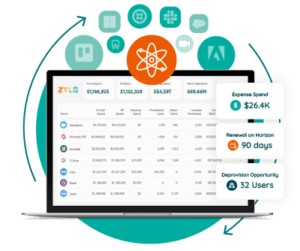 Start with a comprehensive discovery process, like Zylo’s AI-powered discovery. It identifies every SaaS application in your environment—including unmanaged or shadow IT.
Start with a comprehensive discovery process, like Zylo’s AI-powered discovery. It identifies every SaaS application in your environment—including unmanaged or shadow IT.
The process works by integrating Zylo directly to your financial systems—such as Coupa, Expensify, Netsuite, Sage Intacct, SAP Concur, and Workday. In addition, Zylo’s Usage Connect enables integration with other finance and identity systems, helping consolidate data from expense reports, invoices, and SSO logs.
After compiling your complete inventory, Zylo then becomes a single source of truth for managing and optimizing software spend across the organization.
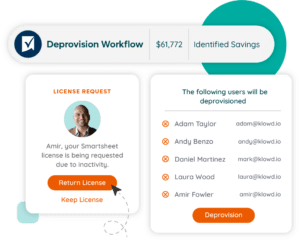
Zylo’s license management tools track how licenses are provisioned, used, reassigned, or left inactive. Automated alerts help reduce waste by surfacing underutilized tiers and unused seats before renewals. Meanwhile, Workflows further streamline this process by automatically triggering license reclamations and downgrades, helping teams avoid unnecessary spending. Over time, this supports smarter license allocation and ensures spend stays aligned with actual usage.
Zylo surfaces redundant tools and overlapping functionality across departments, such as multiple project management or training apps. This visibility allows you to consolidate spend and streamline your tech stack.
The platform also highlights user overlap—when individuals have access to multiple tools that serve the same or similar function—driving unnecessary costs and inefficiencies. By analyzing these patterns along with usage trends, Zylo helps identify opportunities to retire low-value apps and standardize on high-performing ones.
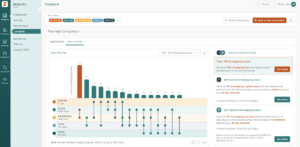
To be efficient, teams must track current SaaS spend against budget targets and forecast future costs.
This includes monitoring license usage, renewal timelines, vendor pricing trends, and user overlap—where individuals can access multiple tools that serve the same or similar function. Identifying this kind of redundancy helps avoid duplicate spending and improves forecasting accuracy.
With this insight, IT, procurement, and finance teams can plan strategically, uncover savings opportunities, and avoid last-minute surprises during budgeting cycles.

Knowing whether your optimization efforts are working requires the right metrics. Zylo helps you measure success through real-time dashboards and customizable reports that tie together software usage, license data, and cost savings.
Common KPIs to track include:
Cost savings is a direct outcome of effective SaaS spend management. Below are a few examples of enterprises driving financial results with SaaS Management.
These metrics help teams validate the impact of their strategy, communicate success to leadership, and uncover new areas of opportunity. With Zylo, optimization is measurable—not just aspirational.
Adobe Drives Innovation and Massive Savings with Zylo
In the past 4 years, Adobe has rapidly scaled from $9B to $18B. This growth has made an already complex environment even more complex. Learn how they leveraged Zylo to get complete visibility into their SaaS portfolio, unlock millions in cost savings and avoidance and improve the employee experience.
Managing SaaS is no longer optional—it’s essential. Without complete visibility, clear ownership, and automated processes, software costs can quickly spiral out of control. Whether you’re just beginning your SaaS Management journey or scaling a mature strategy, Zylo gives you the tools to take action.
Explore how Zylo’s SaaS Spend Management platform can help you gain control, eliminate waste, and drive long-term value across your entire software portfolio.
With the right data, processes, and platform in place, you can make smarter software decisions, support business growth, and maximize the return on every dollar spent.

Table of Contents ToggleWhat Is SaaS Spend Management?SaaS Spend Management vs...

Table of Contents ToggleA SaaS System of Record Lays a Critical...

Table of Contents ToggleWhat Is SaaS Spend Management?SaaS Spend Management vs...
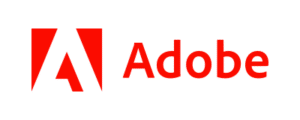
In the past 4 years, Adobe has rapidly scaled from $9B to $18B. This growth has made an already complex environment even more complex. Learn how they leveraged Zylo to get complete visibility into their SaaS portfolio, unlock millions in cost savings and avoidance and improve the employee experience.
| Cookie | Duration | Description |
|---|---|---|
| cookielawinfo-checkbox-analytics | 11 months | This cookie is set by GDPR Cookie Consent plugin. The cookie is used to store the user consent for the cookies in the category "Analytics". |
| cookielawinfo-checkbox-functional | 11 months | The cookie is set by GDPR cookie consent to record the user consent for the cookies in the category "Functional". |
| cookielawinfo-checkbox-necessary | 11 months | This cookie is set by GDPR Cookie Consent plugin. The cookies is used to store the user consent for the cookies in the category "Necessary". |
| cookielawinfo-checkbox-others | 11 months | This cookie is set by GDPR Cookie Consent plugin. The cookie is used to store the user consent for the cookies in the category "Other. |
| cookielawinfo-checkbox-performance | 11 months | This cookie is set by GDPR Cookie Consent plugin. The cookie is used to store the user consent for the cookies in the category "Performance". |
| viewed_cookie_policy | 11 months | The cookie is set by the GDPR Cookie Consent plugin and is used to store whether or not user has consented to the use of cookies. It does not store any personal data. |
